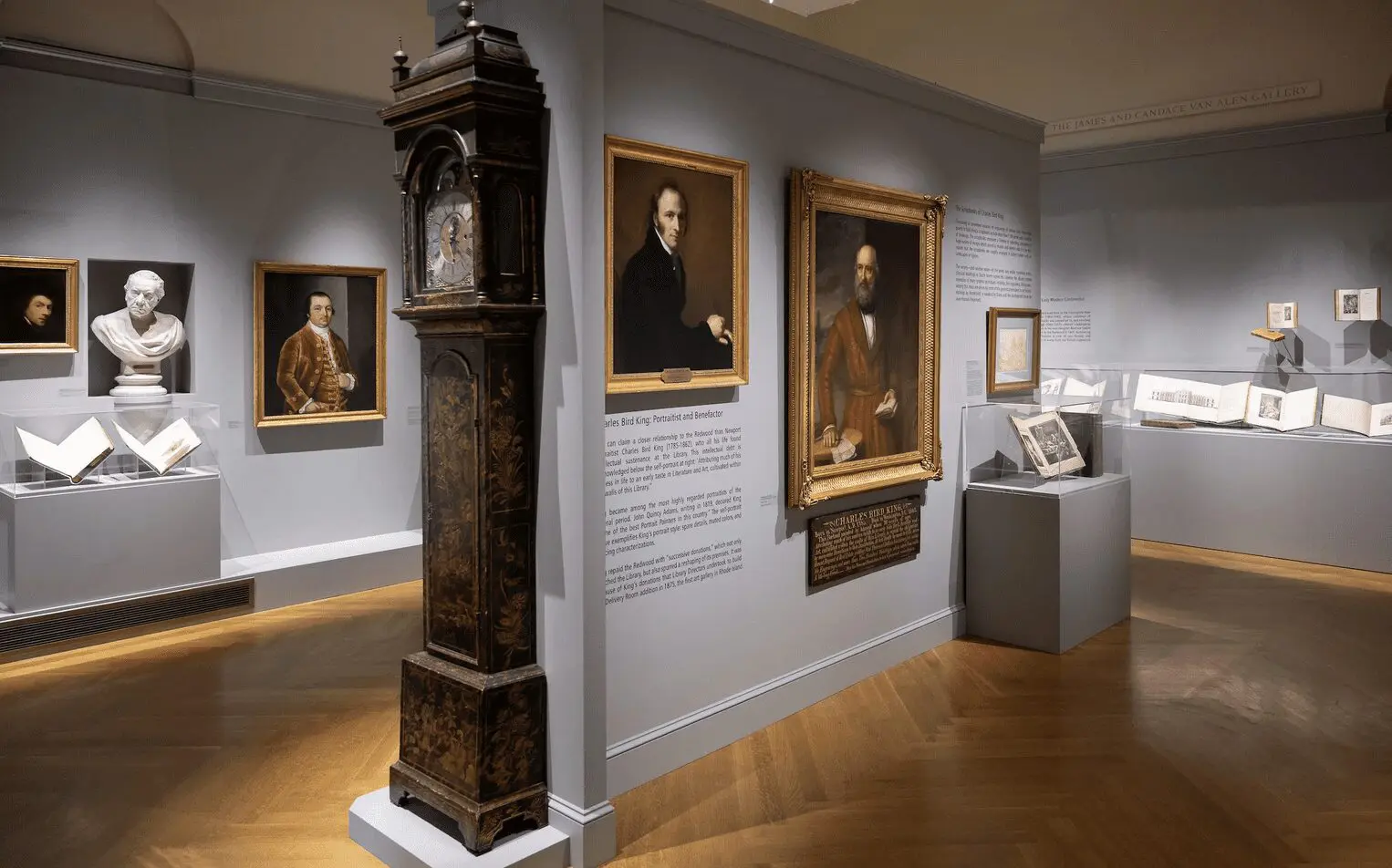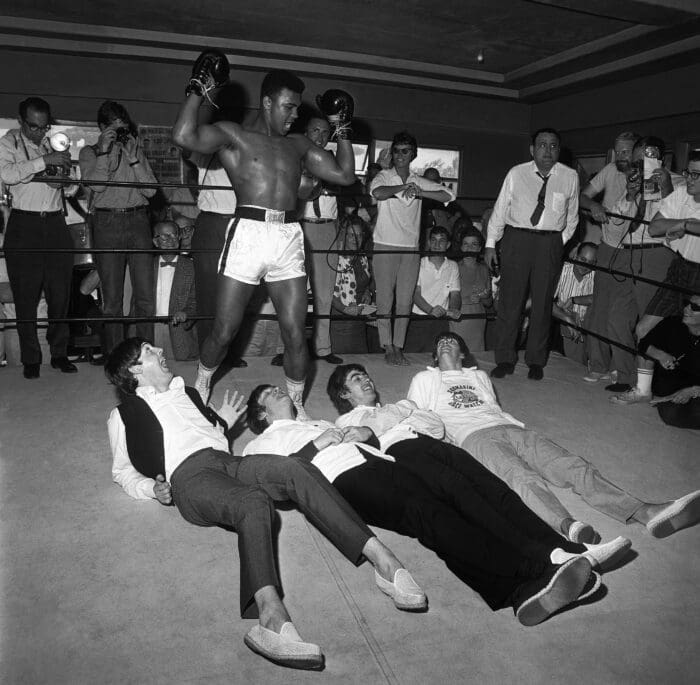Search Posts
Recent Posts
- Rhode Island Weather for June 18, 2025 – Jack Donnelly June 18, 2025
- Johnson & Wales University names Joseph Greene, Providence campus president, to lead major new initiatives June 18, 2025
- To Do in RI: Hospitality employees and Newport Co. residents welcome at free Newport attractions June 18, 2025
- Time for Sour Grapes – June 18, 2025 – with Tim Jones June 18, 2025
- It is what it is: Commentary, 6.18.25 – with Jen Brien June 18, 2025
Categories
Subscribe!
Thanks for subscribing! Please check your email for further instructions.

ART! Treasures of the Redwood (Library) – Celebrating 275 Years
by Nancy Thomas
For its 275th anniversary, the Redwood Library & Athenaeum has opened a prominent exhibition: Treasures of the Redwood: Celebrating 275 Years. In celebration of its 275th year, this exhibition will bring forth a rich selection of some of the Redwood’s unparalleled holdings, gathered over nearly three centuries of collecting and donations. Starting with rare, annotated works from the Original Collection, to a range of eighteenth-century materials, such as the famous Stiles map, period portraits and sculptures, manuscripts, furniture and artifacts. Also featured will be supremely rare works from the Cary collection of pattern and decorative art books, as well as the private notebooks of American portraitist Charles Bird King, a cache of rare French decorative drawings, and a range of books only known in a single copy from the Redwood.
Now open through March 5, 2023 in the Van Alen Gallery at the Redwood Library & Athenaeum. In celebration of the 275th Anniversary year admission is free.
Beginning on June 29th is exhibition: Harry Benson: Persons of Interest
Harry Benson’s incisive photographs have captured the most important persons and events of the 20th century; from his arrival in America with the Beatles in 1964 to marching with Dr. Martin Luther King Jr. during the Civil Rights movement to being next to Senator Robert F. Kennedy when he was assassinated; from photographing every US president from Eisenhower to Biden to covering Truman Capote’s legendary Black & White Ball, he is the most published photographer in LIFE magazine.
Opening June 29, 2022

Harry Benson, The Beatles and Cassius Clay (later Muhammad Ali) at the Fifth Street Gym, Miami, 1964
About the Redwood Library & Athenaeum
Founded in 1747 on the Enlightenment ideals of intellectual pursuit and civic engagement, and committed to lifelong, interdisciplinary learning, the Redwood Library & Athenæum generates knowledge in the humanities for the benefit of the widest possible audience with “nothing in view but the good of mankind.”
By the end of 2021, the Redwood Library & Athenæum will continue to be one of the leading cultural institutions in Southern New England, producing programming of the highest rigor— lectures, exhibitions, musical performances—in addition to promoting historical research. With an equal devotion to the visual and the literary, as well as to the necessary dialogue between history and contemporary culture, the Redwood’s preeminent position is the result of the breadth and intellectual value of its programming and collections, exemplifying the belief that the humanities can empower all citizens to create a better world.
The Redwood Library and Athenaeum is America’s first purpose-built library (1747), and the oldest continuously operating in its original location. As such, it is the only remaining secular public cultural institution in this country with an unbrokenlink to the colonial period and the Nation’s founding. Housed in the earliest public Neoclassic building in the U.S., andcontaining Rhode Island’s first art gallery (1875), it has functioned for nearly three-hundred years as Newport’s intellectualcore, a humanities center and civic learning hub styled after ideals of ancient Athenian culture and philosophy.
As an athenaeum—an interdisciplinary ‘think space’ comprising a library, museum, and research center—the Redwood is home to exceptional collections. The Library contains 200,000 volumes, with particular strengths in early American history and material culture, early modern architecture, decorative arts and garden design, eighteenth-century European illustrated books, and the history of Newport and Rhode Island. The museum holds an important collection of portrait paintings and artifacts, and features two gallery spaces for rotating exhibitions. With these resources the Redwood provides a range of cultural experiences and services: lectures, concerts, and exhibitions, in addition to a lending library and the facilities for the scholarly study of its historic holdings.
Created as a community endeavor by its namesake and forty-six original proprietors—what has been described as the single“greatest act of philanthropy in colonial America”—the Redwood Library was established to “propagate virtue, knowledgeand useful learning with nothing in view but the good of mankind.” Its premise is that an educated citizenry undergirds civilsociety and a strong republic. Today, with an acknowledgement of its founding on the profits of the slave economy of the eighteenth-century sugar trade, it is explicitly committed to the public humanities, defined here as the use of history and culture to address diverse communities so as to create a more enlightened and equitable world. History thus embeds theRedwood’s existence and activities in civic education and public service, guided by the values of integrity, empathy, community and innovation, as well as by the belief in the power of the liberal arts to address our shared humanity.
The Redwood’s institutional approach, as evident in the range of its programs and offerings, capitalizes on its unique position as a hybrid institution able to stimulate intellectual pursuit across multiple periods and diverse subjects. Thisapproach originates in the Redwood’s historic multi-dimensional charge as a site where to gain both theoretical and practical knowledge, itself a recognition that the world—then as now—is best viewed from multiple perspectives. It was in order to reflect this expansiveness that the term athenaeum was added to the Library in 1833, formalizing the institution’s embraceof the historic and the contemporary, the theoretical and the practical, as well as the literary and the visual. Hence theaddition of Rhode Island’s first art gallery to the nation’s first library in 1875.
Today, nearly three centuries after its inception as a premier institution of the American Enlightenment, the Redwood continues to create and transmit knowledge in multiple ways—both on site and online—fostering inclusiveness by cultivating a variety of constituencies and catering to their broad interests. The Redwood aims not only to provide accessible humanities programming for the widest possible audience, but also to specifically address: researchers, students, culture tourists, the underserved, in addition to local patrons seeking communal cultural experiences alongside the solitary digestion of books.
Originally conceived to service southern New England in between—and in dialog with—Harvard and Yale, the Redwood might ultimately best be understood as a symbol. In the eighteenth century, a fast-changing world with striking parallels to our own, it symbolized the intellectual aspirations of a nascent America, and the fundamental American belief in the uplifting power of education and self-reliance. Today, in an age of reductive news cycles, the Redwood stands for the hard- earned benefits of historical understanding, enabling us to draw lessons from the past to navigate and improve the present, as well as to shape the future.
